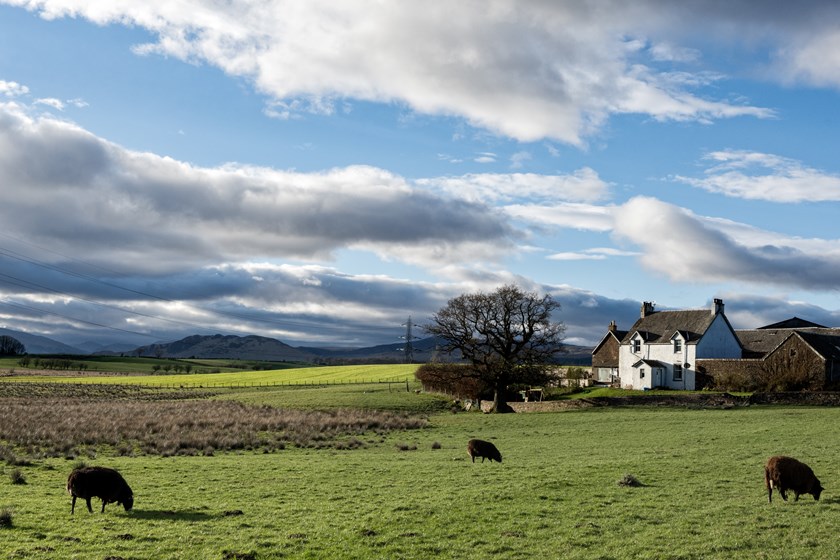Woodland Tax
Insight

Whether your woodland forms part of a shoot or is used for commercial timber, a forest school, paintballing or glamping, it is well worth considering the inheritance tax (IHT) implications of passing it on to the next generation and the capital gains tax (CGT) consequences of selling the timber or the land.
Inheritance Tax
Woodland Relief
Under section 125 of the Inheritance Tax Act 1984 (IHTA), it is possible to claim relief on the value of any trees or underwood growing on the land provided the woodlands are not occupied or ancillary to agricultural land. This provides a ‘deferral relief’ so that an IHT charge does not arise until the timber is sold in the future. However, such claims are rarely made because they apply only to the trees and not the land. Business Property Relief (BPR) or Agricultural Property Relief (APR) are often available with significantly more favourable tax consequences.
Business Property Relief
Commercial woodland can qualify for 100% BPR from IHT (section 104 IHTA). The effect is that no IHT will be payable on the owner’s death on either the land or the trees.
In order to qualify as commercial, woodland must:
- Constitute a business
- Be managed with a view to profit, and
- Have been owned and occupied by the transferor for two years before the transfer.
It is crucial to be able to show HMRC that woodland fulfils these requirements. Recent IHT tribunal cases attest to the importance of being able to provide evidence of commerciality. Woods managed as a business include those used for commercial shooting, fishing, residential letting or commercial timber harvesting.
A good place to start is to keep separate woodland accounts. If direct labour is employed, contracts of employment and copies of worksheets may be requested by HMRC to substantiate a claim. If contractors are used, invoices and details of work will be needed, so must be retained. Badges of trade can also be useful. These include:
- Subject matter – do woodlands constitute an asset that is often used to generate a trading profit?
- Length of period of ownership – is the asset held on a long term basis to benefit an increase in investment value?
- Frequency of transactions
- Supplementary work (eg seasoning wood)
- Circumstances of sale – market price, contracts, customer registrations, marketing activity
- Motive – is the main reason behind sales to make a profit?
As for profitability, the life cycle of woodland is such that it is not always possible to make a profit in years where regeneration and planting take place. However, what HMRC are looking for are viable long term intentions which can be satisfied with regular budget reviews and business/management plans (for example using the Forestry Commission’s Woodland Management Plan template). Having a formal written document setting out strategy and operations is invaluable for this.
Agricultural Property Relief
In order to benefit from this relief, the woodland must either be classed as agricultural property or be ancillary to agricultural property which is occupied for agricultural purposes (section 115(2) IHTA). Ancillary uses include tree nurseries, ‘shelter belts’, or where the activity of short rotation coppice is carried out eg for woodchips, firewood and fencing. As with BPR, accounts should be kept to clearly reflect the exact nature of the activity in order to satisfy HMRC.
Note that where a new wood has been planted subject to a grant to take land out of agricultural use, it cannot qualify as agricultural property as it is no longer being used for this purpose.
Heritage Relief
If the woodland is in an area of “outstanding scenic, historic or scientific interest”, then it may qualify for conditional exemption from IHT under section 31 IHTA. On a transfer of value it may be exempted on the condition that the new owner agrees to maintain the woodland and grant access to the public. Claims for heritage relief can apply to both ancient woodland and new plantations.
Capital Gains Tax
Commercial Woodland
The sale of timber or standing timber from commercial woodlands is exempt from CGT (section 250 Taxation of Chargeable Gains Act 1992 (TGCA)). The sale of the land, however, is not. Where the woodland is sold as a whole, an apportionment is made between the value of the standing trees, timber and underwood and the value of the land.
The capital gain on the land is taxable but should qualify for reliefs such as Holdover, Rollover and in some instances Entrepreneurs’ Relief (ER) (see overleaf). Relief on the sale of timber and standing timber is restricted to commercial woodland. This apportionment is not applicable to agricultural or amenity woodland.
Agriculture and Amenity Woodland
Any sums received in respect of felled trees from agricultural or amenity woodlands are within the charge to CGT. However, each tree is treated as a single chattel and a chargeable gain could therefore only arise in the unlikely event of the single tree being sold for more than £6,000.
Entrepreneurs' Relief
There has been some debate as to whether ER is available on the disposal of purely commercial woodland. The answer is that it is not available because occupation of commercial woodland is explicitly defined as not being a trade (section 11 Income Tax (Trading and Other Income) Act 2005).
However, ER is available if the woodland and the business are sold or valued as one entity and the business that uses them qualifies for the ER. If the woodland forms part of a larger farming estate, it constitutes part of the asset used for the purposes of a business.
The legislation contains no provision requiring an apportionment to be made in circumstances where part only of an asset is so used, and so the whole gain can benefit from the relief. The effect is to apply a CGT rate of 10% to qualifying gains up to a lifetime limit of £10 million.
“Recent IHT tribunal cases attest to the importance of being able to provide evidence of commerciality.”
Rollover Relief
By contrast to entrepreneurs’ relief, rollover relief under section 152 TCGA specifically extends to woodlands where these are managed by the occupier on a commercial basis and with a view to the realisation of profits. Whether the sale is purely of woodland or of a larger estate is therefore irrelevant.
Rollover Relief enables any CGT due on a disposal of the woodland (‘the old asset’) to be deferred when ‘new assets’ are acquired costing the same as, or more than, the amount realised on disposal of the old asset. The relief enables the tax to be postponed until disposal of those new assets.
Holdover Relief
Holdover Relief under section 165 TCGA similarly extends to include woodlands. Holdover Relief applies to gifts and means you do not pay CGT when you give away the assets but the person you give them to pays CGT, if any is due, when they sell or dispose of them.
Heritage Relief
Heritage relief can also apply to capital gains. As above, the requirement is that the woodland is of “outstanding scenic, historic or scientific interest” and the effect is to render the sale as a conditionally exempt transfer. This means it is exempt from CGT on the condition that the new owner agrees to maintain the woodlands and grant access to the public.
If you require further information about anything covered in this briefing note, please contact Marcus Maxwell, or your usual contact at the firm on +44 (0)20 3375 7000.
This publication is a general summary of the law. It should not replace legal advice tailored to your specific circumstances.
© Farrer & Co LLP, January 2019







